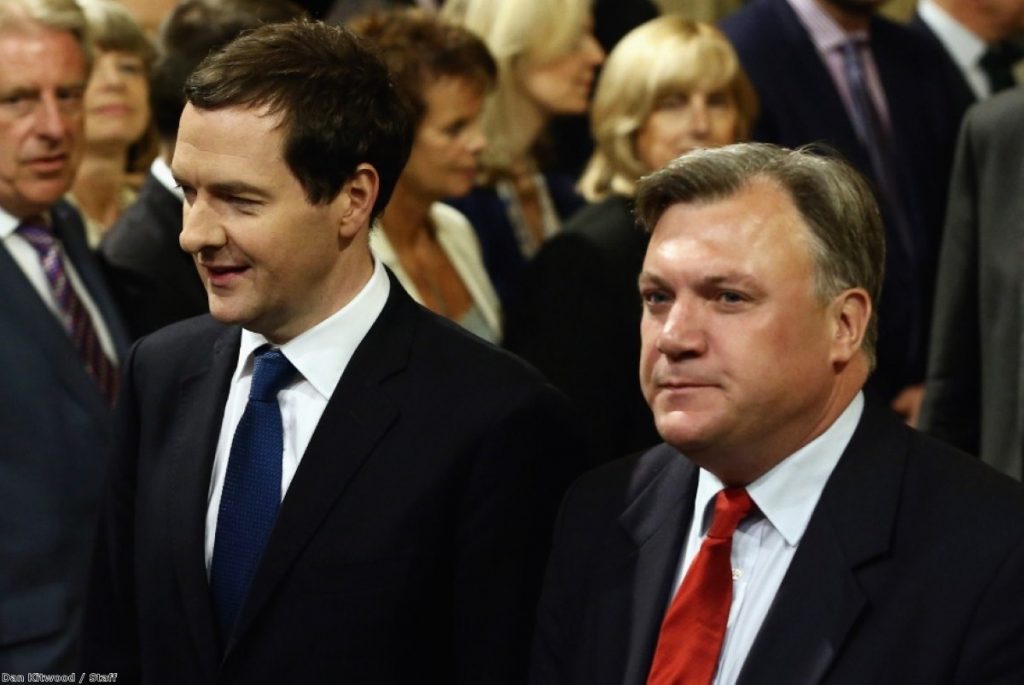Osborne or Balls? An expert verdict on who’s the better speaker
By Richard Newman
In the lead-up to the 2015 elections we are looking at our leaders and wondering who will be best to take our nation forward. As we watch them we don't simply analyse their words – we also want to get a feel for the people behind the scripts, to understand if they are able to put it all into action.
So it seems worthwhile to analyse their actions and see what they can tell us.
George Osborne and Ed Balls have gone head to head debating the economy for years, and this gives us a great opportunity to compare their speaking styles, from autumn statement debates to party conference speeches.


The chancellor's speaking style has made gradual progress from soft to strong. He started in office with a calmer voice, standing more upright in the Commons and making smaller gestures. In this year's autumn statement he was seen leaning strongly forwards, ready for battle. His forehead was tense, his voice strong and his gestures created a steady, forceful beat to emphasise his message.
With a lowered stance he was seen leaning his shoulder far towards the opposition as if ready to drive his message past them. He finished with a final repeated motion of beating the table as he listed every achievement the Conservatives claim to have made, showing his physical conviction to each point.
For any speaker to continue for 50 minutes with such an emphatic voice, raising his volume over the surrounding noise without pausing for water, or becoming hoarse, takes great control.
Ed Balls appears less confident in stature, rhythm of speech and size of gesture. His voice is repeatedly hoarse, which gives the listener a feeling that he lacks strength or control in his speech. As he speaks he shifts more often from one foot to the other, appearing less at ease. His flow falters more often, when distracted by the noise in the Commons, leaving him repeating his words to find his train of thought again. Of course, it is a hugely challenging place to be heard and speak fluently above the jeers, but he is less focussed in the face of this.
Osborne's gestures are broader and more definite, similar to David Cameron's, who regularly gestures away from his body with a wide palm. This allows them both to appear physically more in command of the space around them. Balls makes his gestures right in front of himself, in a similar way to Ed Miliband. By keeping their gestures closer to their body it gives them less visual presence. If Miliband and Balls strengthened their stance, gestures and voices they could create a clearer appearance of authority and leadership.
The final area of Ed Balls' style that is worth noting is the wide-eyed look that he often gives. In interviews, speeches and debates his eyebrows are often raised, making him appear surprised by the information he is hearing or giving. This may make him appear less serious, focussed or in control.
It is true that an analysis of someone's speaking style should not be used as conclusive evidence about how good they are at economics, or how well suited they are to balance the Budget. However, with a complex economic situation and every leader and party claiming they have the right answers, people will make judgements based on who they believe in.
When we get confused by policies and statistics we tend to trust our gut instinct and reaction to people. In this situation actions can speak louder than words.
This is why it is so crucial not just to get the numbers right, but also to speak with strength, conviction and control. On this measure Osborne has the edge over Balls.
Richard Newman is the director of UK Body Talk Ltd., specialists in communication skills for leaders
The opinions in Politics.co.uk's Comment and Analysis section are those of the author and are no reflection of the views of the website or its owners.









